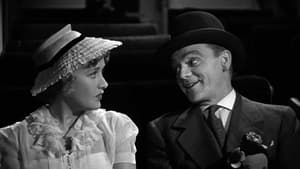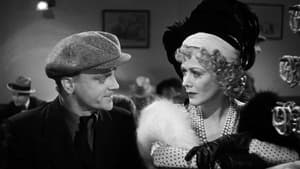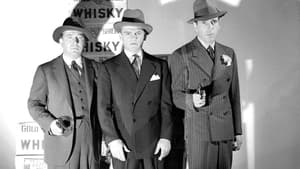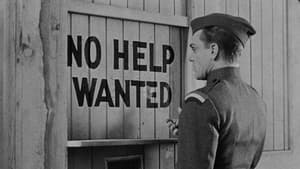Contact: [email protected]
Video Sources 0 Views
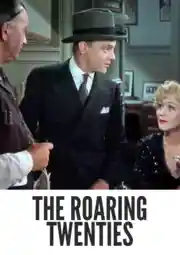
Synopsis
[ez-toc]





Introduction
In the vast expanse of old movies, few resonate with the allure of a bygone era like “The Roaring Twenties Colorized” (1939). Directed by Raoul Walsh and featuring the indomitable pairing of James Cagney and Humphrey Bogart, this classic film immerses audiences in the tumultuous Prohibition era against the backdrop of the 1929 stock market crash. In this exploration, we traverse the historical significance of The Roaring Twenties Colorized, delving into its newly colorized version to uncover the transformative impact on our perception of the 1920s.
Read Media File Transfer Agreement: Terms and Conditions
Read FAQ
The Roaring Twenties Colorized(1939 film)
As the curtains rise on “The Roaring Twenties Colorized,” viewers are transported to a time of social upheaval, economic turmoil, and clandestine revelry. Raoul Walsh’s directorial prowess encapsulates the essence of the Prohibition era, weaving a narrative around the lives of Eddie Bartlett (James Cagney) and George Hally (Humphrey Bogart), two men navigating the treacherous world of bootlegging and crime.
Set against the backdrop of the Prohibition era and the aftermath of the stock market crash, the film captures the zeitgeist of the roaring twenties Colorized. The narrative unfolds against a tapestry of societal shifts, exploring themes of corruption, loyalty, and the consequences of unchecked ambition. James Cagney’s dynamic energy and Humphrey Bogart’s brooding charisma elevate the film, creating a timeless cinematic experience that has endured through the decades.
The Significance of Colorizing Old Movies
The decision to embark on the colorization journey of classic black-and-white films marks a pivotal moment in the evolution of cinematic preservation. Technological advancements have ushered in an era where the monochromatic elegance of vintage films can be rejuvenated with a palette of vibrant hues. The debate surrounding colorization extends beyond mere aesthetics, touching upon the delicate balance between preserving cinematic history and catering to contemporary tastes.
The meticulous process of colorization involves the infusion of life into every frame, breathing new vitality into scenes frozen in shades of black, white, and gray. While purists argue that colorization may compromise the intended aesthetic of a film, proponents contend that it offers a gateway for modern audiences to connect with the narratives of the past. The careful application of color has the potential to amplify emotional resonance and narrative depth, creating a bridge between generations of cinephiles.
Experiencing The Roaring Twenties in Color: A Visual Spectacle
The colorized iteration of “The Roaring Twenties Colorized” is not merely a retelling of a classic; it is a visual spectacle that transforms the viewing experience. The addition of color serves as a time machine, catapulting audiences into the heart of the 1920s with a vividness previously unseen. Flapper dresses sparkle in hues of emerald and gold, while the smoky ambiance of speakeasies takes on a new dimension, immersing viewers in the opulence and grit of the era simultaneously.
The colorization process accentuates the film’s visual storytelling, breathing life into the glamorous façade and the harsh realities that lie beneath. From the glitzy nightlife to the dimly lit, crime-ridden streets, each scene becomes a canvas painted with the vibrant strokes of nostalgia. This visual reimagining enhances certain sequences, offering audiences a fresh perspective on the timeless allure of “The Roaring Twenties Colorized.”
The Legacy of The Roaring Twenties Colorized
“The Roaring Twenties Colorized” is not a relic confined to the annals of old movies; it stands as a testament to the enduring power of storytelling. Recognized by the American Film Institute in its Top 10 Gangster Films list, the movie has etched its place in cinematic history. Its enduring popularity is a testament to its narrative depth, impeccable performances, and timeless relevance.
Critics, both from its initial release to contemporary reviews, have consistently praised the film. The legacy of “The Roaring Twenties Colorized” goes beyond box office success, permeating the cultural fabric of cinema. It invites reevaluation and introspection, sparking conversations that transcend generations. The enduring resonance of this classic underscores its significance in the broader context of film history.
Preserving and Appreciating Old Films
“The Roaring Twenties Colorized 1939” serves as a catalyst for a broader conversation on the importance of preserving and appreciating old films. These cinematic relics offer more than mere entertainment; they provide a window into the past, capturing the ethos, fashion, and cultural nuances of their respective eras. Film preservation emerges not only as a technical endeavor but as a cultural responsibility to safeguard the collective memory of humanity.
As we celebrate the colorized brilliance of “The Roaring Twenties,” it becomes imperative to extend our appreciation to other notable movies from the 1920s era. Encouraging audiences to explore these films, both in their original black-and-white format and any colorized versions that may exist, fosters a deeper understanding of the evolution of cinema. The juxtaposition of old and new allows us to appreciate the nuances of storytelling and filmmaking techniques that have shaped the trajectory of the industry.
In conclusion, “The Roaring Twenties Colorized 1939” emerges not as a mere reimagining of a classic but as a testament to the adaptability of old movies in the ever-evolving landscape of the film industry. The fusion of vintage charm with modern technology creates a cinematic experience that transcends temporal boundaries, inviting new audiences to savor the timeless allure of a bygone era. As we revel in the resplendent hues of this colorized masterpiece, let us also recognize the broader journey of preserving and cherishing the cinematic gems that have woven the rich tapestry of our film history.

